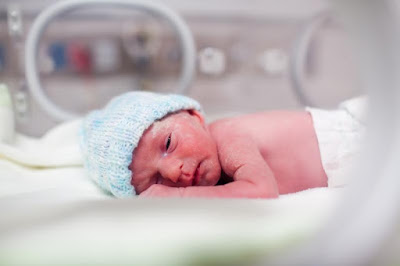Most newborns who are moderately small for gestational age are normal babies who just happen to be on the smaller side. However, some have had their growth restricted by various factors. Growth restriction can be classified as,- Symmetric: The newborn is proportionately small, that is, its weight, length, and head size are similarly low or small.
- Asymmetric: Only weight is affected.
In symmetric growth restriction, the cause probably occurred early in the pregnancy when it would affect all of the cells in the newborn's body. Asymmetric growth restriction probably results from problems that occur later in pregnancy because some tissues develop sooner than others and not all would be affected equally.
Risk factors for growth restriction include those involving the mother's underlying health, and those involving the pregnancy and/or the fetus.
MATERNAL RISK FACTORS
The risk of having a small-for-gestational-age (SGA) baby is increased for mothers who are very young or very old or who have had others SGA babies.
Medical disorders in the mother that increases the risk of having an SGA baby include,
- High blood pressure(hypertension)
- Long-standing diabetes
- Chronic kidney disease
- Heart disease or lung disease
- Lupus
- Severe anemia
- Sickle cell disease
- Abnormalities of the uterus, for example, a uterus that has two parts (bicornuate uterus)
PREGNANCY RISK FACTORS
- Having more than one fetus, for example, twins or triplets (Twins grow at the same rate as single fetuses until about 32 weeks. After that, twins grow more slowly and maybe SGA at birth. For triplets, slower growth begins at about 28 weeks).
- Use of assisted reproduction to conceive the pregnancy
- Preeclampsia
- Early separation of the placenta (placental abruption)
- Use of alcohol or cigarettes
- Use of certain drugs such as amphetamines, anticonvulsants, certain cancer drugs, cocaine, or opioids
- Severe malnutrition
FETAL RSIK FACTORS
- Birth defects that involve the brain, heart, or kidneys
- Certain infections in the fetus, including Zika virus, cytomegalovirus (CMV), or rubella (German measles)
- Genetic abnormalities, such as trisomy 18.



Comments
Post a Comment